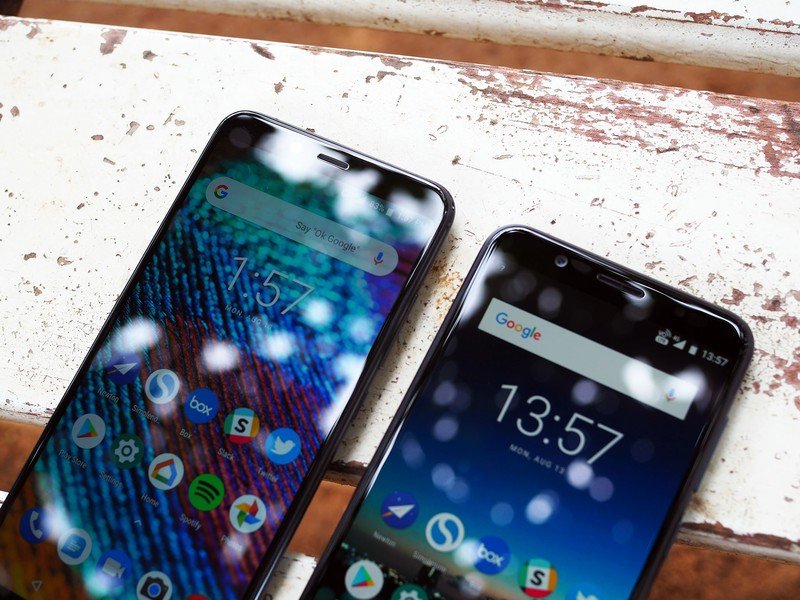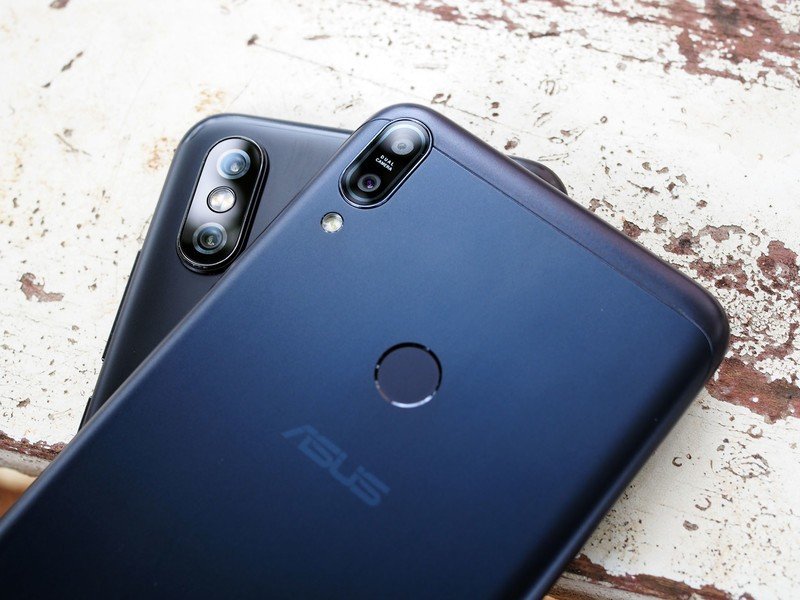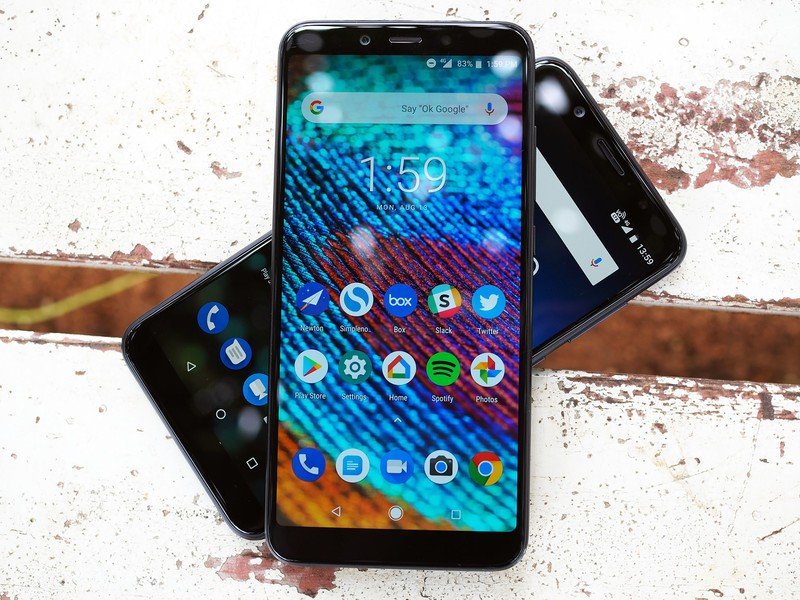Xiaomi Mi A2 vs. ASUS ZenFone Max Pro M1: Divergence

Earlier this year, ASUS turned the tables on Xiaomi with the ZenFone Max Pro M1, a budget phone with a huge battery and enticing hardware that went toe-to-toe with the Redmi Note 5 Pro and came out ahead in a few areas. ASUS not only managed to undercut the Redmi Note 5 Pro but was also able to make enough units available to meet the deamnd for the M1, which Xiaomi still struggles with today.
We've already seen how the ZenFome Max Pro M1 fares next to the Redmi Note 5 Pro, but it makes sense to pit the device against Xiaomi's latest phone as both devices are running pure Android. The Mi A2 falls under the purview of Android One, whereas ASUS is offering a "stock" Android ROM with a few ZenUI underpinnings.
For its part, the Mi A2 has plenty going for it. The device is powered by the Snapdragon 660, which is more powerful when compared to the Snapdragon 636 in the M1, and has class-leading front and rear cameras. With the Mi A2 set to go on sale later this week in India for ₹16,999 ($250) and the ZenFone Max Pro M1 available for ₹12,999 ($185), it's time to see how the M1 holds up next to Xiaomi's latest Android One phone.
Xiaomi Mi A2 vs. ZenFone Max Pro M1: Specs

| Category | Xiaomi Mi A2 | ASUS ZenFone Max Pro M1 |
|---|---|---|
| Operating System | Android 8.1 Oreo Android One | Android 8.1 Oreo |
| Display | 5.99-inch 18:9 FHD+ (2160x1080) IPS LCD panel Gorilla Glass 5 | 5.99-inch 18:9 FHD+ (2160x1080) IPS LCD panel |
| SoC | Octa-core Qualcomm Snapdragon 660 4x2.2GHz Kryo 260 + 4x1.8GHz Kryo 260 14nm | Octa-core Qualcomm Snapdragon 636 Eight Kryo 260 cores up to 1.8GHz 14nm |
| GPU | Adreno 512 | Adreno 509 |
| RAM | 4GB/6GB | 3GB/4GB/6GB |
| Storage | 32GB/64GB/128GB | 32GB/64GB/64GB |
| Expandable | No | Yes, dedicated up to 2TB |
| Rear camera | 12MP (f/1.75, 1.25um) + 20MP (f/1.75, 1.0um) PDAF, LED flash, 4K video recording | 13MP Omnivision 16880 f/2.2 + 5MP f/2.4 PDAF, LED flash 4K video recording |
| Front camera | 20MP (f/1.75, 1.0um) AI portrait mode LED Selfie light Beautify 4.0 | 8MP f/2.0 1080p video recording |
| Connectivity | LTE with VoLTE Wi-Fi 802.11 ac, Bluetooth 5.0 GPS, GLONASS | LTE with dual VoLTE Wi-Fi 802.11 b/g/n, Bluetooth 4.2 with AptX GPS, GLONASS Micro-USB, 3.5mm audio jack |
| Battery | 3000mAh battery Quick Charge 4.0 (India) QC3.0 (ROW) USB-C | 5000mAh battery Fast charging (5V/2A) |
| Fingerprint | Rear fingerprint | Rear fingerprint |
| Dimensions | 158.7 x 75.4 x 7.3mm | 159 x 76 x 8.46mm |
| Weight | 166g | 180g |
| Colors | Black, Rose Gold, Gold, Blue | Meteor Silver, Deepsea Black |
Where they're equal

There's a lot of similarities between the Mi A2 and the ZenFone Max Pro M1. Although ASUS didn't team up with Google to launch the M1 with Android One, the user interface on the device is near-identical to what you get on the Mi A2.
The Mi A2 is rocking an aluminum unibody chassis, with the M1 offering a metal alloy back with plastic inserts for the antennae and an aluminum mid-frame. Going with a mix of materials has allowed ASUS to cram a monstrous 5000mAh battery in the M1 while still bringing the overall weight down to an easily manageable 180g.



Neither phone stands out from an aesthetic standpoint, and although the Mi A2 feels slightly better to hold in day-to-day usage, it isn't going to win any design awards.
Both devices feature 5.99-inch 18:9 FHD+ panels, and you get little in the way of display color customization. On the software front, both phones are currently running Android 8.1 Oreo.
Get the latest news from Android Central, your trusted companion in the world of Android
What the Mi A2 does better

The Mi A2 is Xiaomi's most powerful phone in the $250 segment yet, with the device powered by the Snapdragon 660. The M1 meanwhile features a Snapdragon 636, which has similar cores that are clocked lower. You're not going to see a huge difference between the two devices in real-world usage scenarios, but the Mi A2 has a slight edge when it comes to gaming thanks to higher clocks on the Adreno 512 GPU.
The highlight with the Mi A2 is the front and rear cameras. Xiaomi has mentioned that its main goal for 2018 is to improve the camera quality on its phones, and we've seen that over the course of the year with the Redmi Note 5 Pro, Mi Mix 2S, and now the Mi A2.
The 12MP + 20MP cameras at the back do a fantastic job both in daylight and low-light scenarios, and it's clear that the phone has a considerable edge over the M1 when you look at just a few samples. The 20MP front camera is also a considerably upgrade from what the M1 has to offer, with Xiaomi touting AI-assisted portrait mode along with a front LED module that kicks in during low-light conditions.
Xiaomi Mi A2 on the left, ASUS ZenFone Max Pro M1 on the right.
And while the M1 has an uncluttered user interface, as the device isn't under the Android One program, there's no telling when it will pick up the Android Pie update. As for the Mi A2, Xiaomi has stated during the launch that the device will be one of the first third-party devices to pick up the stable Android Pie build, and although we haven't been told a timeline, it is reasonable to assume that the update will be delivered before the end of the year.
What the Max Pro M1 does better

The ZenFone Max Pro M1 doesn't hold up to the Mi A2's cameras, but it utterly destroys Xiaomi's handset when it comes to battery life. With a 5000mAh battery under the hood, the M1 manages to easily deliver two days' worth of usage with some charge left over.
Honestly, if you're looking for a phone with the best battery life in this segment, then the M1 is an easy recommendation. ASUS has also managed to do a better job with the basics — the M1 has a 3.5mm jack as well as a dedicated MicroSD slot in addition to two SIM card slots. The MicroSD slot can fit in a 2TB SD card, and the phone has dual VoLTE.
All of the aforementioned features are integral to budget devices, and they're missing from the Mi A2. The M1 does one better by including AptX support, which makes a lot of difference when streaming media over Bluetooth.
Finally, the M1 has an edge when it comes to actual sales. All signs point to Xiaomi sticking to a flash sales model for the Mi A2, which if history is anything to go by will make it difficult for customers to get a hold of the device. In contrast, ASUS is selling the ZenFone Max Pro M1 in an open sale on Flipkart. If you're interested in picking up the device, all you need to do is hit up the link below and shell out ₹12,999 ($185).
What should you buy? Down to you

The camera on the Mi A2 is the one to beat in this segment, and if you're one to take a lot of photos, then the Mi A2 is a no-brainer. The phone is missing the 3.5mm jack and a MicroSD slot, but it isn't as big a deal when you factor in just how good that camera is in day-to-day usage conditions. Xiaomi includes a USB-C to 3.5mm dongle in the box, and the 64GB of internal storage should be more than enough for most users.
If you require more storage, then you're better off waiting for the 6GB/128GB variant to launch in the country. There's no specific timeline for a launch, but it should be in the coming months.
If you're looking for a device with a two-day battery life, then you'll love what the Max Pro M1 has to offer. ASUS has done a masterful job with the M1, and the device is one of the best budget phones you can buy in 2018.
Sure, the camera isn't as good as what you get on the Mi A2, but the device has outstanding battery life and has features that target a more mainstream audience, like the 3.5mm jack and a MicroSD slot.

Harish Jonnalagadda is Android Central's Senior Editor overseeing mobile coverage. In his current role, he leads the site's coverage of Chinese phone brands, networking products, and AV gear. He has been testing phones for over a decade, and has extensive experience in mobile hardware and the global semiconductor industry. Contact him on Twitter at @chunkynerd.






